Click on the title of the publication to see details. To be directed to the publication’s website, click on the cover image. Note that to view the full article for many of these, a subscription or fee is required (noted by the $$ symbol below).
2018
Developing Governance Principles for Public Natural Resources
Authors: Darragh Hare, Ann Forstchen, Christian Smith, and Daniel Decker
Publication: 2018. Society of Natural Resources, Volume 31, Issue 3. $$
Abstract: Wildlife governance principles (WGPs) identify desirable governance characteristics for wildlife conservation in the United States (US). The types of institutional, ecological, and socio-cultural challenges that WGPs are designed to address also affect governance of public natural resources other than wildlife and in places other than the US. This raises the possibility that a similar set of governance principles might help natural resource professionals working in other resource contexts address the particular challenges they face. We describe the process by which we developed WGPs and offer seven practically oriented questions to help natural resource professionals ascertain whether a similar set of principles could improve governance in their context. In some contexts, minor modification of WGPs might be appropriate; in others, the process by which we developed WGPs could serve as a blueprint for formulating appropriate principles.
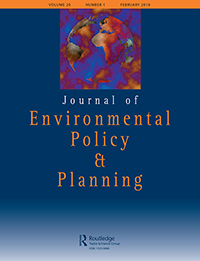 Designing Regional-level Stakeholder Engagement Processes: Striving for Good Governance while Meeting the Challenges of Scale
Designing Regional-level Stakeholder Engagement Processes: Striving for Good Governance while Meeting the Challenges of Scale
Authors: Emily Pomeranz and Daniel Decker
Publication: 2018. Journal of Environmental Policy and Planning. $$
Abstract: Stakeholder engagement processes have sought to ensure that state government meets public trust and good governance obligations to citizens. As the expectations of stakeholders and state agencies change, and management focuses on landscape-level interventions, a change in the level at which agencies engage the public is needed. This involves tradeoffs, as different levels call for different engagement design and implementation considerations. To understand how these differences affect decision making, we examine a regional engagement model for deer management in New York that was piloted to replace a sub-regional model. We identify concerns with the old model, objectives for the redesigned model, and explain the logistical and good governance considerations that informed its design. We share our evaluation of the model's process and outcomes, including implications for program design and scale. Overall, despite the pilot model's attention to design components aimed at addressing potential barriers to regional engagement as well as limitations of the previous engagement model, the pilot did not meet many of its objectives, especially those related to representation, resulting in some of the same concerns associated with the model it was intended to enhance and replace. Implications of this for regional-level engagement efforts are discussed.
2017
 Applying Public Trust Thinking to Wildlife Governance in the United States: Challenges and Solutions
Applying Public Trust Thinking to Wildlife Governance in the United States: Challenges and Solutions
Authors: Darragh Hare, Daniel Decker, Christian Smith, Ann Forstchen, and Cynthia Jacobson
Publication: 2017. Human Dimensions of Wildlife, Volume 22, Issue 6. $$
Abstract: Public trust thinking (PTT) promises to inspire ecologically and socially responsible wildlife governance in the United States, but its application is not straightforward. We describe eight broad challenges to comprehensive application of PTT including: increasing authority and capacity; overcoming resistance to change; achieving fair consideration of all public interests; facilitating broad public participation; and fulfilling commitments to future generations. We discuss potential solutions including: distributing responsibilities for public wildlife conservation among governmental and nongovernmental entities; adopting an expansive definition of “wildlife;” promoting an inclusive interpretation of PTT among public wildlife professionals; rejuvenating relationships between the public and wildlife agencies; and increasing public participation and accountability in decision-making processes. Efforts to address challenges in specific socioecological contexts should be led by people working in those contexts. Achieving comprehensive application of PTT will require collaboration and cooperation among governmental and nongovernmental partners, supported by diverse and engaged members of the public.
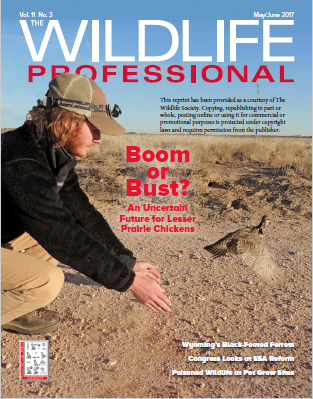 Not Only for the Money: Why More Citizens Should have a Voice in State Agency Decisions
Not Only for the Money: Why More Citizens Should have a Voice in State Agency Decisions
Authors: Daniel Decker, Ann Forstchen, and Michael Schiavone
Publication: 2017. The Wildlife Professional, Issue 11, Volume 3. $$
Excerpt: “In the commentary, “He Who Pays the Piper Calls the Tune – Maybe,” John Livaitis argues that state fish and wildlife agencies should give more citizens a voice in wildlife management by offering a persuasive economic case (2017). But funding is not the only reason that state agencies should consider the breadth of citizen interests in decision making. Other powerful arguments exist. Chief among them is the Public Trust Doctrine, the legal foundation for government jurisdiction over wildlife that establishes a trustee relationship in which governments hold and manage wildlife, fish and waterways for the benefit of the resources and the public…This doctrine also requires state agencies to consider the interests of all citizens equitably.
Today citizens expect governance that is inclusive, transparent, efficient and accountable. We believe that expanding engagement with the public and being more inclusive in considering diverse public interests in wildlife management are essential for improving the relevance of wildlife in a rapidly changing society and creating the prospect of better and more durable conservation outcomes for future generations” (page 24).
2016
 Wildlife Health and Public Trust Responsibilities for Wildlife Resources
Wildlife Health and Public Trust Responsibilities for Wildlife Resources
Authors: Daniel Decker, Krysten Schuler, Ann Forstchen, Margaret Wild, and William Siemer
Publication: 2016. Journal of Wildlife Diseases, Volume 52, Issue 4. $$
Abstract: A significant development in wildlife management is the mounting concern of wildlife professionals and the public about wildlife health and diseases. Concurrently, the wildlife profession is reexamining implications of managing wildlife populations as a public trust and the concomitant obligation to ensure the quality (i.e., health) and sustainability of wildlife. It is an opportune time to emphasize the importance of wildlife health, specifically to advocate for comprehensive and consistent integration of wildlife health in wildlife management. We summarize application of public trust ideas in wildlife population management in the US. We argue that wildlife health is essential to fulfilling public trust administration responsibilities with respect to wildlife, due to the central responsibility of trustees for ensuring the well-being of wildlife species (i.e., the core resources of the trust). Because both health of wildlife and risk perceptions regarding threats posed by wildlife disease to humans and domestic animals are issues of growing concern, managing wildlife disease and risk communication vis-à-vis wildlife health is critical to wildlife trust administration. We conclude that wildlife health professionals play a critical role in protecting the wildlife trust and that current conditions provide opportunities for important contributions by wildlife health professionals in wildlife management.
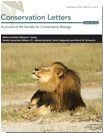 Governance Principles for Wildlife Conservation in the 21st Century
Governance Principles for Wildlife Conservation in the 21st Century
Authors: Daniel Decker, Christian Smith, Ann Forstchen, Darragh Hare, Emily Pomeranz, Catherine Doyle-Capitman, Krysten Schuler, and John Organ
Publication: 2016. Conservation Letters, Volume 9, Issue 4. Free.
Abstract: Wildlife conservation is losing ground in the U.S. for many reasons. The net effect is declines in species and habitat. To address this trend, the wildlife conservation institution (i.e., all customs, practices, organizations and agencies, policies, and laws with respect to wildlife) must adapt to contemporary social–ecological conditions. Adaptation could be supported by clear guidelines reflecting contemporary expectations for wildlife governance. We combine elements of public trust thinking and good governance to produce a broad set of wildlife governance principles. These principles represent guidance for ecologically and socially responsible wildlife conservation. They address persistent, systemic problems and, if adopted, will bring the institution into line with modern expectations for governance of public natural resources. Implementation will require changes in values, objectives, and processes of the wildlife conservation institution. These changes may be difficult, but promise improved wildlife conservation outcomes and increased support for conservation. We introduce challenges and opportunities associated with the principles, and encourage dialogue about them among scientists, practitioners, and other leaders in U.S. wildlife conservation. The principles alone will not change the course of conservation for the better, but may be necessary for such change to occur.
2015
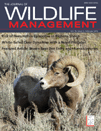 Stakeholder Engagement in Wildlife Management: Does the Public Trust Doctrine Imply Limits?
Stakeholder Engagement in Wildlife Management: Does the Public Trust Doctrine Imply Limits?
Authors: Daniel Decker, Ann Forstchen, Emily Pomeranz, Christian Smith, Shawn Riley, Cynthia Jacobson, John Organ, and Gordon Batcheller
Publication: 2015. Journal of Wildlife Management, Volume 70, Issue 2. $$
Abstract: Recent evolution of the wildlife management institution in the United States includes adoption of good governance principles, wherein stakeholders expect and are provided opportunities for input and involvement in making decisions about public wildlife resources. Concurrently and perhaps paradoxically, state wildlife agencies are encouraged to operate with fidelity to the public trust doctrine and the principles of public trust administration, which may require trust administrators (i.e., appointed commissioners and public wildlife managers) to keep trust beneficiaries (i.e., theoretically all citizens, but especially special interests) at arm's length (i.e., restricted from having undue control) with respect to directly influencing decision-making. In addition, public trust administration includes citizens taking responsibility for holding trust administrators accountable and requires government to provide citizens recourse for doing so. In practice, however, accountability typically is achieved through political influence or litigation, both routes antithetical to efficient public trust resource administration. This set of potentially conflicting expectations—practicing good governance through citizens' engagement in wildlife decision-making processes, limiting beneficiaries' direct influence on decisions of trust administrators, and citizens' responsibility for holding trust administrators accountable—creates an apparent conundrum for state wildlife agencies. As a catalyst for deliberation about the implications of public trust doctrine in the wildlife profession, we describe potential problems and suggest ways for public wildlife managers to perform their responsibilities with due diligence to the combined expectations and requirements of good governance and the public trust doctrine.
2014
 Principles of Public Trust Thinking
Principles of Public Trust Thinking
Authors: Darragh Hare and Bernd Blossey
Publication: 2014. Human Dimensions of Wildlife, Volume 19, Issue 5. $$
Abstract: Public trust thinking (PTT) offers a philosophical orientation toward natural resources and a means of addressing persistent and emerging challenges in environmental conservation. It has inspired laws and policies around the world and is receiving increasing attention among scholars and natural resource practitioners. Nevertheless, attempts to develop and implement PTT are hampered by lack of clarity: no clear single statement of principles that unite PTT’s diverse expressions exists. We address this need by synthesizing PTT literature across academic disciplines. We identify four areas that are in need of development and offer five principles that characterize PTT: (1) Human well-being is dependent on benefits provided by ecosystems; (2) Certain resources are not suitable for exclusive private ownership; (3) All beneficiaries are equal; (4) Future generations should be considered in current resource management decisions; and (5) Trustees are bound by fiduciary obligations and are publicly accountable.
 The Essential Role of Human Dimensions and Stakeholder Participation in States’ Fulfillment of Public Trust Responsibilities
The Essential Role of Human Dimensions and Stakeholder Participation in States’ Fulfillment of Public Trust Responsibilities
Authors: Ann Forstchen and Christian Smith
Publication: 2014. Human Dimensions of Wildlife, Volume 19, Issue 5. $$
Abstract: The Public Trust Doctrine (PTD) vests states with a fiduciary responsibility to manage wildlife for the benefit of current and future generations. States have varied approaches to applying the PTD for wildlife management ranging from a traditional focus on hunters, anglers, and trappers to a progressive approach of broad inclusion of all potential stakeholders in their decision-making processes. We argue that states need to gather and incorporate more and better human dimensions (HD) information to fulfill their PTD responsibilities. We describe some of the barriers to increased use of HD and the changes in agency culture, staffing, data gathering, and decision-making processes necessary to integrate HD effectively and comport with the PTD. We conclude that in addition to increasing fulfillment of PTD responsibilities, increased use of HD information will help maintain agency relevance, increase political support, and secure broader agency funding.
 Public Trust Philosophy for Fish and Wildlife Management: Implications for Human Dimensions
Public Trust Philosophy for Fish and Wildlife Management: Implications for Human Dimensions
Authors: T. Bruce Lauber, Daniel Decker, and Emily Pomeranz
Publication: 2014. Human Dimensions of Wildlife, Volume 19, Issue 5. $$
Excerpt: “The implications of contemporary public trust discussions should stimulate [consideration of] both the importance and limits of human dimensions research and stakeholder engagement practices in helping fish and wildlife management agencies fulfill these principles…Fish and wildlife managers and human dimensions specialists should make it a priority to explore…how human dimensions research and stakeholder-engagement practices can contribute to accountability, transparency, and fairness without privileging one set of stakeholders over another” (page 393).
 Challenges for Multilevel Stakeholder Engagement in Public Trust Resource Governance
Challenges for Multilevel Stakeholder Engagement in Public Trust Resource Governance
Authors: Emily Pomeranz, Daniel Decker, William Siemer, Arthur Kirsch, Jeremy Hurst, and James Farquhar
Publication: 2014. Human Dimensions of Wildlife, Volume 19, Issue 5. $$
Abstract: The trend in wildlife management over the last two decades has been to develop locally based approaches for responsiveness to local conditions, but some state wildlife agencies are finding the amount of staff time required to service this approach prohibitive. Although local engagement strategies have been lauded as assuring that public trust obligations of state government to citizens are met, we can expect that states with a local focus as their operational level of stakeholder engagement may opt to change their approach to reflect their resource limitations. We argue for comprehensive regional level effort to understand stakeholders augmented with local engagement processes where needed to deal with special circumstances in smaller areas within a region. Such an approach can be anticipated to have implications for stakeholder engagement and human dimensions research needs, which we discuss in the context of public trust resource administration and good governance of wildlife resources.
 Public Trust Principles and Trust Administration Functions in the North American Model of Wildlife Conservation: Contributions of Human Dimensions Research.
Public Trust Principles and Trust Administration Functions in the North American Model of Wildlife Conservation: Contributions of Human Dimensions Research.
Authors: John Organ, Daniel Decker, Sadie Stevens, Tanya Lama, and Catherine Doyle-Capitman
Publication: 2014. Human Dimensions of Wildlife, Volume 19, Issue 5. $$
Abstract: The public trust doctrine (PTD) is the common law basis for governments to hold wildlife in trust for the benefit of current and future generations of Americans. Wildlife as a public trust resource is the foundation of the North American Model of Wildlife Conservation. We examine principles that underlie a trustee’s role in the context of the PTD and governmental responsibility. We evaluate purposes of and needs for human dimensions inquiry in execution of a trustee’s wildlife stewardship responsibility. We conclude human dimensions research is essential for government to fulfill its responsibilities as trustee, particularly considering the breadth and often conflicting interests of stakeholders. Human dimensions research can serve an important function in identifying and affirming core societal values toward wildlife that underpin the PTD and in monitoring shifts in society’s values to ensure resiliency of the trustee role and relevance and legitimacy of institutional norms of wildlife resource governance.
 Landscape Conservation Cooperatives: Building a Network to Help Fulfill Public Trust Obligations
Landscape Conservation Cooperatives: Building a Network to Help Fulfill Public Trust Obligations
Authors: Cynthia Jacobson and Elsa Haubold
Publication: 2014. Human Dimensions of Wildlife, Volume 19, Issue 5. $$
Abstract: The Landscape Conservation Cooperative (LCC) network (Network), comprised of 22 conservation partnerships spanning North America and U.S. Islands, is uniquely positioned to assist government members in fulfilling their public trust obligations to sustain natural and cultural resources for current and future generations by (a) ensuring inclusivity of broad stakeholder participation in conservation decision-making, and (b) building capacity for public trust to work in conservation, thus increasing the chance for successful and lasting conservation outcomes. In this article, we discuss the vision for the Network; challenges individual LCCs and the Network face in achieving the vision of sustaining natural and cultural resources for the benefit of current and future generations, a public trust obligation of most of the members; and ways in which member LCCs are making progress in this regard. We offer recommendations for the Network to consider to improve its ability to meet public trust obligations.
 NGOs Enhance State Wildlife Agencies’ Capacity to Meet Public Trust Doctrine Obligations
NGOs Enhance State Wildlife Agencies’ Capacity to Meet Public Trust Doctrine Obligations
Authors: Heidi Kretser, Michale Glennon, and Zoe Smith
Publication: 2014. Human Dimensions of Wildlife, Volume 19, Issue 5. $$
Abstract: State wildlife agencies (SWAs) manage natural resources for the benefit of the common good. However, effective management in today’s complex world requires institutional capacity that can address specific challenges. Nongovernmental organizations can enhance SWAs’ ability to manage wildlife as a public resource for which competing demands exist. The Wildlife Conservation Society (WCS) led a participatory process to identify a suite of landscape species representative of habitats and human-caused threats in the Adirondack Park of northern New York. This effort benefitted the management of resources under the public trust doctrine. WCS brought additional capacity, specifically personnel, resources, programming, and credibility with partners, to conservation initiatives focused on boreal birds, moose, and black bears over a 15-year period in the Adirondack Park, NY. This investment resulted in several long-term projects that enhanced the NYS Department of Environmental Conservation’s ability to provide improved management and multiple benefits from these resources to the public.
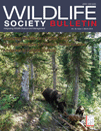 Impacts Management: An Approach to Fulfilling Public Trust Responsibilities of Wildlife Agencies
Impacts Management: An Approach to Fulfilling Public Trust Responsibilities of Wildlife Agencies
Authors: Daniel Decker, Ann Forstchen, John Organ, Christian Smith, Shawn Riley, Cynthia Jacobson, Gordon Batcheller, and William Siemer
Publication: 2014. Wildlife Society Bulletin, Volume 38, Issue 1. $$
Abstract: In many states, case law, statutes, or constitutions establish a “public trust in wildlife,” a derivative of the public trust doctrine. Although interpretation differs across jurisdictions, the underlying principle of wildlife as a public trust resource, explicitly expressed or not, carries with it broad obligations and standards of trust administration by government to ensure benefits of wildlife are available to all citizens, present and future. The standards for execution of responsibilities by trustees (elected officials or their appointees, such as commissions) and trust managers (e.g., wildlife professionals working for state wildlife agencies) require understanding beneficiaries' varied interests in the wildlife resource, which in turn requires effective public input and involvement, following the precepts of good governance, such as inclusiveness, openness, fairness, transparency, and accountability. Managing wildlife resources as public trust assets entails providing sustainable net benefits from the existence of wildlife and its co-existence with humans. Wildlife managers need an approach to wildlife management that is philosophically consistent with the benefits-production focus of trust administration. We explain that impacts management is such an approach, essentially tailor-made for fulfilling trust-management responsibilities because of its focus on diverse, stakeholder-value-defined outcomes (desired impacts) and its reliance on stakeholders' input for identifying and weighing competing outcomes desired by them. Impacts management is a wildlife resource management approach for providing sustainable, highly relevant public trust administration.
2013
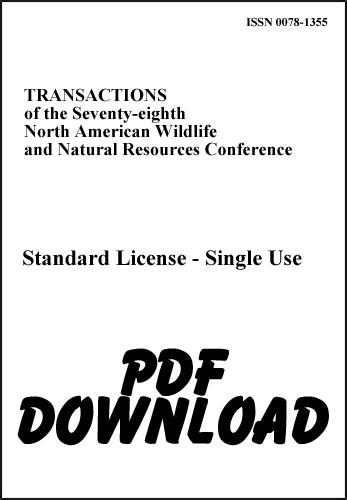 What Does it Mean to Manage Wildlife as if Public Trust Really Matters?
What Does it Mean to Manage Wildlife as if Public Trust Really Matters?
Authors: Daniel Decker, Ann Forstchen, Cynthia Jacobson, Christian Smith, John Organ, and Darragh Hare
Publication: 2013. Transactions of the North American Wildlife and Natural Resources Conference 78. $$
Excerpt: “The idea of public trust resources is a longstanding philosophical and legal concept, deeply rooted in Western culture for over a millennium. Of particular interest to us, the status of wildlife as public trust resources has been institutionalized as a legal doctrine in our North American paradigm for wildlife conservation for more than a century. It is the basis for the authority and responsibility that our state and federal wildlife agencies exercise on behalf of all citizens, current and future, to ensure that wildlife resources and the benefits society receives from them are sustained indefinitely. This observation has been articulated many times during the last decade, embedded in what is referred to as the North American Model of Wildlife Conservation. Indeed, narrators on the North American model typically present the public trust doctrine as the underpinning of the model—the foundation upon which the wildlife conservation institution in North America (at least the United States) has been built” (page 18).
2012
 Stakeholders as Beneficiaries of Wildlife Management
Stakeholders as Beneficiaries of Wildlife Management
Authors: Kirsten Leong, Daniel Decker, and T. Bruce Lauber
Publication: 2012. Human Dimensions of Wildlife Management, 2nd Edition, Chapter 3. $$
Excerpt: “Following principles of the Public Trust Doctrine, wildlife in North America belong to the people as common public natural resources; the government is entrusted to manage “the people’s” wildlife resources in the public interest. That mandate is the underlying reason for the existence of public agencies for wildlife management to administer the public wildlife trust.
The management and decision-making challenges associated with governing the use and ensuring the sustainability of wildlife are similar to those found in the management of any common property. Although patterns of consumption and management traditions vary across cultures, regions, and resources, the pervasive human-dimensions problem for professionals responsible for managing common natural resources is the same: recognizing the interests of many people and coordinating the use, distribution, abundance, and character of resources to provide benefits to people while sustaining the resources for future generations” (page 26).
“Stakeholder engagement helps managers fully realize their role in managing public trust resources. By incorporating the full range of stakeholders throughout all stages of management, agencies improve the durability of decisions and the sustainability of management activities. Lasting relationships gained in one decision or issue serve future decisions. As societal values develop and change, a manager practicing stakeholder engagement will be well-poised to identify and incorporate new interests in wildlife management” (page 40).
2011
 The Role of State Wildlife Professionals under the Public Trust Doctrine
The Role of State Wildlife Professionals under the Public Trust Doctrine
Author: Christian Smith
Publication: 2011. The Journal of Wildlife Management, Volume 75, Issue 7. $$
Abstract: The Public Trust Doctrine (PTD) is considered the cornerstone of the North American Model of Wildlife Conservation. Effective application of the PTD requires a clear understanding of the doctrine and appropriate behavior by trustees, trust managers, and beneficiaries. Most PTD literature refers generically to the role of the government as the people's trustee, without addressing the differences between the legislative, executive, and judicial branches of government in the United States or recognizing the distinction between elected and appointed officials and career civil servants. Elected and appointed officials, especially in the legislative branch, have policy-level decision-making authority that makes them trustees of the people's wildlife under the PTD. In contrast, career professionals working for state wildlife agencies (SWA's) have ministerial duties as trust managers. The differences between the roles of trustees and trust managers are important. By focusing on their role as trust managers, while supporting and respecting the role of elected and appointed officials as trustees, SWA professionals can more effectively advance application of the PTD.
2010
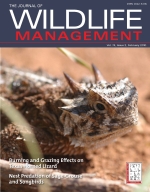 A Conservation Institution for the 21st Century: Implications for State Wildlife Agencies
A Conservation Institution for the 21st Century: Implications for State Wildlife Agencies
Authors: Cynthia Jacobson, John Organ, Daniel Decker, Gordon Batcheller, and Len Carpenter
Publication: 2010. The Journal of Wildlife Management, Volume 75, Issue 8. $$
Abstract: The wildlife conservation institution (Institution) needs to reform to maintain legitimacy and relevancy in the 21st century. Institutional reform is inherently slow. Limitations resulting from historical and resource dependencies between state wildlife agencies and hunters have left the Institution poorly positioned to meet changing ecological and social complexities. In this paper, we suggest that an ideal Institution would have the following 4 components: broad-based funding, trustee-based governance, multidisciplinary science as the basis of recommendations from professional staff, and involvement of diverse stakeholders and partners. Our suggestions reflect the fundamental tenets of the Public Trust Doctrine, which we believe is the foundation of the Institution. In bringing forth these ideas, we hope to encourage discussion about how the Institution should reform to meet the changing needs of society.
2004
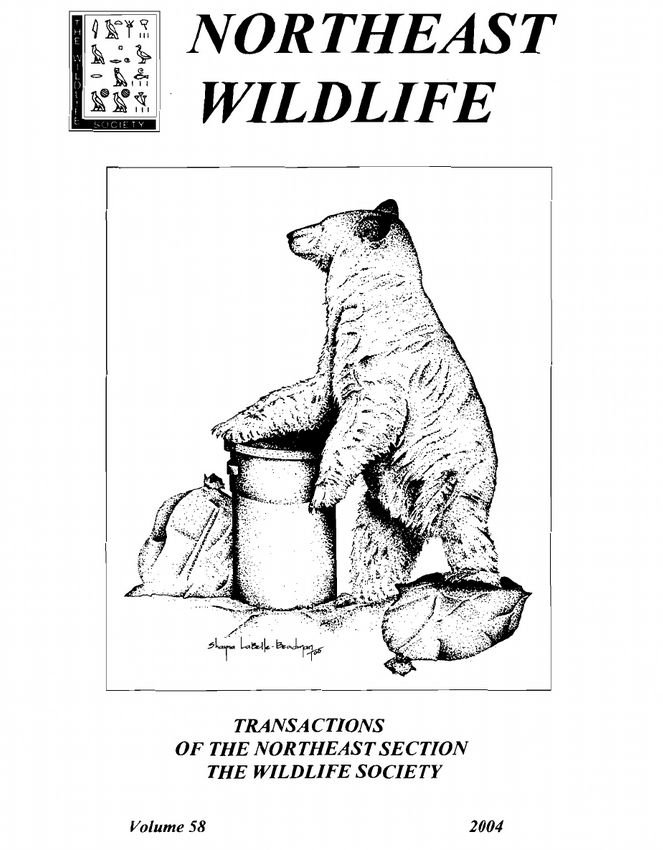 The Public Trust Foundation of the North American Model of Wildlife Conservation
The Public Trust Foundation of the North American Model of Wildlife Conservation
Authors: Valerius Geist and John Organ
Publication: 2004. Transactions of the Northeast Section The Wildlife Society, Volume 58. Free.
Abstract: Seven components have been identified that form the foundation of the North American Model of Wildlife Conservation. Wildlife as Public Trust Resources is the keystone component of this model, as it is the source from which state, provincial, and federal governments derive authority for legal oversight of wildlife. The remaining six model components would crumble if not for this core construct. The concept of wildlife as public trust resources means that they can be owned by no one, and must be held in trust for all people. The origins of this concept predate the formal Public Trust Doctrine and its application in North America by centuries, and in its fundamental form it reflects the utilitarian benefits to be derived from wildlife. North America’s conservation architects recognized cultural and spiritual values as well, values dating back to the Pleistocene, and deemed it necessary to maintain these for the benefit of future, as well as present generations. Today, the public trust in wildlife is under siege on many fronts. Privatization, game ranching, unstainable land use practices, and animal rights are examples of assaults on the public trust. We discuss these and other impending threats to wildlife as a public trust. We emphasize the need to identify the fundamental societal values that motivate people to conserve wildlife, and the need to explore the underlying parameters governing society’s approval of the uses of wildlife. The political system most likely to successfully maintain wildlife is one in which the benefits as well as the costs of wildlife are distributed broadly, so that a large portion of the public can become positively involved with wildlife. We suggest that a continental wildlife treaty be implemented to fundamentally safeguard the wildlife resource.

